One of the most interesting, focal, and surprising features of the culture and ethnography of the ethnic (Muslim) Albanians in Kosovo-Metochia (KosMet) is their extremely high level of natality compared with both Albania and Europe. However, for the sake to properly analyze this phenomenon, it has to be taken into account two parallel processes:
- The spontaneous breeding in the population still tied by the traditional and conservative way of life.
- The attitude of the political leaders in view of their political ideologies and national aims.
The first phenomenon cannot be, in fact, separated from the later, but, nevertheless, the link between them is not of direct nature. In other words, the Albanians, in general, found themselves, at the time of their national revival (Rilindja, 1878‒1912), surrounded by more numerous nations, like the Greeks and the Serbs.[i] They felt that a more balanced equilibrium will ensure the existence and growth of projected exclusively ethnic Albanian state in the future. However, this idea could be achieved by two processes: rapid increase of the ethnic-Albanian population, and by collecting all Albanian-populated regions into a single state ‒ a Greater Albania. While these aims were a more conceptual long-term project in Albania proper, the ethnic Albanians outside homeland (Albania) experienced this goal as an acute affair, to be achieved as soon as possible and, most important, by all means including ethnic cleansing of non-Albanians.[ii]
In general, the feeling of ethnic endangering may provoke two opposite responses of the population (nation):
- A pessimistic outlook – natality drops and the population diminish in number. This case, for instance, was with North-American Indians, confined in reservations.[iii]
- An optimistic attitude – natality rises so as to compensate for the feeling of national minority and/or inferiority. It has to be noticed that for the Dinaric highlanders (or many other highlanders) the word “minority” sounds humiliating indeed.[iv]
A historical fact is that the Albanians, both in Albania and surrounding countries, opted for the second alternative, but the essence is that giving birth to children has become an obsession and national task. However, this choice bears much risk, considering the non-Albanian environment as such policy has to ensure an expansion space (Lebensraum), both physical and political and those non-Albanians who raise the issue are proclaimed to be nationalists and even racist chauvinists, obsessed by the Albanian birthrate.
The principal targets of the latter point are the Serbs and the Macedonians, whose populations in their countries are “losing ground” before the “biological tsunami” of the fast-breeding ethnic Albanians. Both the above points have made the demographic explosion taboo. Anybody who wants to check what it means can do it but at his/her own risk. One should be aware, however, that there is an essential difference between urban and rural areas in this context. Those living in towns are much better educated and practice family planning, whereas the peasants appear immune to any medical and social education. Since the urban population shares approximately 20% of the overall population at KosMet and considering that an outsider is very improbable to meet a peasant (and if he/she does meet him/her to be able to talk to him/her), the natality syndrome appears well concealed for the “outside world”.
Regardless of the fact that probably a phenomenon of the Albanian “abnormal” natality to someone might sound like a kind of an act of consolation, but, in fact, it was and still it is a political tool for appropriating the land they have found themselves to live on. That this is not a unique instance of the use of biological means for achieving political aims is perhaps the best illustrated by the famous sentence by Yasser Arafat: “Our atomic bomb is the womb of Arabic woman!”[v]
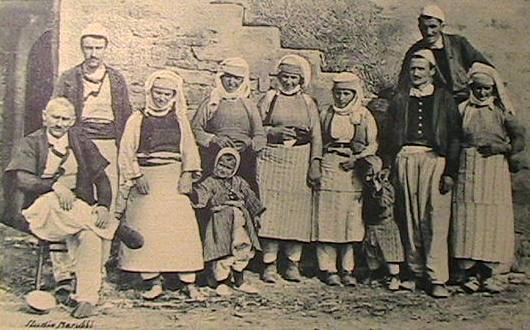
Nevertheless, it does it mean that if a population resort to higher fertility that its collective existence is really endangered. In the case of North America’s Indians, such an attitude would surely gain support in South America’s Europe’s population. On the other hand, the Nazi politics of Arian-race fast breeding was motivated by an aggressive attitude towards “lower-race” nations and had nothing to do with real national or/and political needs. It was obviously the product of a sick mind, a collective paranoia, initiated by the paranoid mind of a genius of evil, Adolph Hitler.[vi] One cannot help recalling how he started with slogans of humiliated, endangered, etc., a German nation. The present-day Albanian-supported and propagated quasi thesis about the Albanian Illyrian origins and ethnogenesis perfectly matches a Nazi neo-Paganism. It begs no great imagination as for the Jewish counterpart in the KosMet issue, as far as the concept of “evil” is concerned.
The common case of the Albanian family life in KosMet since the mid-1960s is the following:[vii] The father (pater familias) works as the gastarbeiter (guest worker) in Germany or elsewhere in West Europe, sends money home, visits home twice a year or so, counts the children and then returns to job abroad. The children are raised by his wife, frequently illiterate woman and children grow practically “in the lane”.
It has become obvious since long time ago, both to the domestic political leaders and politicians abroad that such a demographic explosion of ethnic Albanians in KosMet and the Yugoslav Macedonia will give rise to an unstable situation, politically, educationally, and economically. Within Yugoslavia, those republics who used to provide the contributions to the federal fund became less and less willing to feed the Albanian demographic explosion in KosMet. Although KosMet’s population shared less than 7% of the overall Yugoslav one, 33% of the federal fund went to KosMet. It has become clear since a long time ago that it was family planning which could stop this demographic explosion only and balance the rate of growth and the economic welfare. However, the focal question became: Why it has not been undertaken?
In essence, it has been tried something to do as, for instance, in the 1970s a UN fund donated 100.000 $ to KosMet for organizing family planning education. It has to be noted that at that time it was a large sum, equivalent to the present-day sum of several million dollars. But what happened to this money? Simply nothing as nobody took a dollar from this fund. Was this an outcome of a political decision to deliberate keep the natality rate as high as possible? Nevertheless, instead, to answer this crucial question, it has to be mentioned another instance of “channeled biology”. During the campaign in Serbia before the 1998−1999 Kosovo War for preventing the AIDS proliferation among youth, first of all, students, the latter complained that although they had the opportunity to make use of automats for condoms, the latter turned out often inadequate, since those to be used in KosMet were “too small”. How one can interpret this? As a chauvinistic boasting of non-Albanian Serbs? Or somebody’s deliberate supplying ineffective condoms to the Albanian youth?
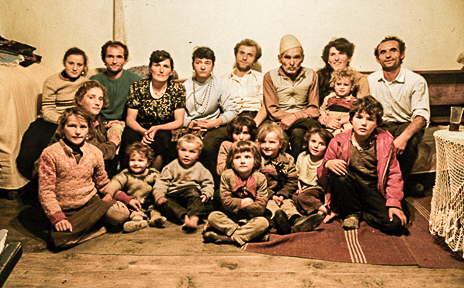
Whatever interpretation of the demographic explosion on KosMet may be, it appears compatible with the political aims of the Albanian leaders there. However, the crucial point of the phenomenon already became that it is the common mantra of any international institution, individual or otherwise, when the KosMet issue is invoked, to stress from the outset that the ethnic Albanians are an overwhelming majority there. All other matters are then automatically subordinated to this point[viii] or another side of the complete truth is simply “forgotten”.[ix]
Guns and Power
Besides the natality, the weaponry is another obsession of the Albanians likewise of all Yugoslav Dinaric highlanders, in particular, the Montenegrins and the Herzegovinians. A weaponry smuggling practice appears to be one of three principal economic activities at KosMet. Another two are drug and people smuggling. However, the main amount of weaponry remains at KosMet. The principal route of weapon traffic goes from High Albania.[x] Since the border with Albania is very difficult to control, going along mountain crests, it is very easy to transfer a large number of weapons, from rifles, guns, bombs, machine guns, personal rockets, etc. (i.e., all kind of weapons except the tanks and the airplanes). During the peak of fighting at KosMet at the summer of 1998, caravans of horses used to carry weapons for the Albanian terrorist organization Kosovo Liberation Army (the KLA)[xi] across the mountainous border with the Federal Republic of Yugoslavia (the FRY). From one hand, the Yugoslav army succeeded to intercept many of those caravans, but from another many of them managed to get through and deliver the arms to the KLA. Which kind of activity it was is the best illustrated by the fact that many of those caravans were without man escort as the horses knew the rout “by heart”.
As it is well-known, a vast majority of the Dinaric highlanders’ households are well equipped with guns and KosMet has been no exception in this regard. This time, however, the situation attains an additional dimension, apart from the weakening of the state’s control of individuals. If those individuals belong to a particular, distinct subpopulation, like a hostile ethnicity, the sociological disaster becomes, in fact, a political one. It was for this reason that the Yugoslav authorities tried many times to collect the weaponry at KosMet from the Albanians, but, unfortunately, with a little effect. Contrary, in fact, all of those attempts provoked even stronger hostility towards Serbia, her authorities, and the Serbs as the nation. For that reason, for instance, the Ministry of Interior during J. B. Tito’s rule was in the hands of Alexandar Ranković (till 1966), Tito’s close crony even since WWII, who was the most hated man in Yugoslavia among KosMet’s Albanians as he intended to establish the order in this Serbia’s province.[xii] Nevertheless, it is quite ironic to note here that the nickname of this minister was Leka, which coincided with the name of the Albanian Leka Dukagjini who was presumably the “legislator” of the Leka Dukagjini’s Codex, which dealt with the blood feud affairs among the Albanians. The Codex was a part of the general common law, the so-called Canun, which provided a rationale for the private possession of the weapons, as a substitute for juristic rule.[xiii]

As a matter of fact, hundreds of thousands of weaponry (700.000?) looted from the military magazines in Albania in 1997 we transported to KosMet. When in 2005 the KFOR ordered all weapons in private possession to be delivered to the authorities, out of wrongly estimated about just 300.000 pieces only 1.700 were delivered mainly old and obsolete arms. Today, it is a belief, there are still at least 400.000 weapons in KosMet in the possession of the ethnic Albanians. Here it has to be noted that historically (unsuccessful) arms collections were frequent at KosMet from the Ottoman times (for instance in 1910) to the present day (in 2005).
Now the crucial question in the matter is: How can a state-run if her subjects are fully armed (like in the USA)? In the following paragraph, it is going to be presented one incident at KosMet from the mid-1980s. It has to be noted, however, that at that time KosMet had practically a status of a republic within the Yugoslav federation, having all other prerogatives like all six Yugoslav republics except for the right to secede. Among other things, police patrols were of mixed type, with an equal share of the ethnic Albanians and non-Albanians (usually the Serbs).
A certain Albanian from the village of Gornji Prekaz committed a crime,[xiv] but the police forces were unable to bring him to the court. His house was close to the forest and whenever a police patrol came, he was warned in advance, run into the forest and after the patrol left the village, would return to his house and continued to enjoy the freedom. One day, however, he failed to run away in time and the police surrounded his house. As it is known, the Albanian houses in rural areas resemble small fortresses rather than the dwelling places. Police did not dare to enter the house, surrounded by a high wall and called the outlaw to surrender. After some negotiations, the latter agreed, with the proviso that they bring another police inspector, who happened to be a Serb. This inspector came and when all seemed arranged a policeman shot a bullet and a fierce shooting started. The fire from the neighboring houses joined that from the surrounded house and the scene looked more from a war movie than standard police intervention. Finally, one policeman was killed, the outlaw too, and his father and daughter (who played an active role in the shooting, too) were wounded. In other words, the battlefield was left with two corps, and two stretches.[xv]
Education and Culture
The period from 1981 (the Albanian mass demonstrations and riot in KosMet) to 1999 (NATO’s aggression on the FRY) was characterized by a gradual and permanent alienation of KosMet from the rest of Serbia and parallel making ever stronger bonds with neighboring Albania. However, these bilateral bonds were prominent even earlier, particularly in the educational domain. The reason for this particular kind of links is a radical disproportion in the economic sphere between KosMet and undeveloped (post) Enver Hoxha’s Albania when, as a consequence, the Albanians from High Albania were emigrating to KosMet and the Yugoslav Macedonia as Yugoslavia for them was like West Europe.
The books, textbooks, and the literature generally used to be imported from Albania extensively. With them came well designed political and national Albanization of KosMet’s Albanians, in particular of the youth. In practice, it meant that Albania was propagated as a motherland of KosMet’s Albanians and, therefore, the political unification of KosMet with Albania was understood as something to be natural and democratic. On the other hand, Serbia and Yugoslavia were propagated to be hostile toward the Albanian national aims. The university professors from Tirana became the frequent visiting staff at the University of Priština while the university staff from Serbia was gradually removed from KosMet. The very main building of the University of Priština was built by the money from the federal fund, which was practically Serbia’s donation.

The political tension and mistrust were used to abuse the educational system. The lecturers from other universities engaged at the University of Priština had to exam the students, who pretended not to understand the Serbo-Croat, in the Albanian language. They would ask a question in the Serbo-Croat language, then the Albanian assistant would translate it to the student. The latter then is talking something in the Albanian, the assistant turns to the examiner and says “he knew” and the student passes the exam. Nevertheless, all this made the educational level at KosMet very low, making the university diplomas useless, even at KosMet itself. By implication, secondary and primary education was lowering down too, and the entire educational system practically collapsed. However, this truth passed unnoticed by external factors, but the most indicative sign of the state of art in this context is a practically total absence of KosMet science on the international scene, except for the Albanology. It has to be noticed that in the Yugoslav Macedonia (today the Republic of North Macedonia), where the Albanian population was even stronger in comparison to Serbia, there was no single Albanian-language university but in KosMet it was.
The local authorities resisted the educational curriculum prescribed by Serbia’s institutions, as an attempt to deAlbanize KosMet’s Albanians. In the literature subject, they complained that too many Yugoslav writers were present in the textbooks at the expense of the ethnic Albanian ones. Since those programs were conceived by the federal boards and since the Albanian literature appears to be poor as compared with the Croat, Serb or Slovenian, for example, this misbalance was simply a reflection of the actual situation. Besides, literature appears the best means to homogenize ethnically and culturally diverse population and to provide a feeling of the common state. To be honest, the vice versa is true too, a greater presence of the Albanian writers (particularly from KosMet) would do the same service to the idea of the common Yugoslav state.
Already in the 1970s, the Albanian students used to prefer the Universities of Zagreb and Sarajevo instead of the University of Belgrade.[xvi] On the other hand, Belgrade used to host tens of thousands of KosMet’s Albanians who became employed in the city public service. When the open hostilities between Belgrade and Priština started in 1998, those Albanian gastarbeiters silently disappeared from the Belgrade streets.
It is true that some graduates from Priština did come to Belgrade for doing their Ph.D. studies and the Serbian university lecturers (out of KosMet) were employed at the University of Priština but gradually as the links with Tirana gained in strength. Serbia practically became absent from her southern province. Students from KosMet were very rare indeed in the rest of Serbia, in particular in Belgrade. Part of this absence should be explained by the low standard of the knowledge which KosMet’s students acquired at the local schools and university and were, therefore, not enough qualified to be enrolled to Serbia’s universities out of KosMet. However, this absence of “youth intersection” broadened as a consequence further the gap between the Albanian and all other Serbia’s population. If the mixing of Central Serbia’s students with their colleagues from the University of Priština was stronger such animosity towards non-Albanians would have probably been less pronounced. At least the rest of Serbia’s population would have been aware of the hatred Albanian felt toward the rest of the citizens of Serbia.
Reposts are welcomed with the reference to ORIENTAL REVIEW.
Endnotes:
[i] The term Rilindja means in the Albanian language “Renaissance” or “rebirth”. It historically refers to the Albanian movement from 1878 to 1912 of national awakening and revival. It covered the period from the First Albanian League of Prizren to the proclamation of the first national state of the Albanians on November 28th, 1912 during the First Balkan War (1912‒1913) [Elsie R., Historical Dictionary of Kosova, Lanham, Maryland‒Toronto‒Oxford: The Scarecrow Press, Inc. 2004, 154]. The movement was struggling for the creation of a Greater Albania. In 1913, at the conference of European Great Powers (the UK, Germany, Austria-Hungary, Russia, France, and Italy) Albania’s formal independence was recognized. On this occasion, historical Serbia’s region of Kosovo-Metochia returned to Serbia, and North Epirus was given to Greece [Waldman C., Mason C., Encyclopedia of European Peoples, Volume I (A to K), New York: Facts On File, Inc., 2006, 15]. Albania’s total area is 11,100 square miles. About 70% of its territory is mountainous, and the fertile Adriatic coast comprises the other 30%. In the extremely mountainous terrain of the north lie the Dinaric Alps. In essence, Albania’s rugged terrain has isolated the country from the neighbors which enabled the preservation of its traditional and conservative culture. About 70% of the population are the Muslims, 20% are the Christian Orthodox, and 10% are the Roman Catholics. As a matter of historical fact, Albania was from 1967 to 1990 the first officially atheist country in the world as the Communist Government banned all religions. On Albania, see more in [Hall D., Albania and Albanians: Albania into the 21st Century, London: Pinter, 1994]. On the modern history of the Albanians, see in [Vickers M., The Albanians: A Modern History, New York: St. Martin’s 1995]. On the Albanian religion and culture, see in [Elsie R., A Dictionary of Albanian Religion, Mythology, and Folk Culture, New York: New York University Press, 2000].
[ii] Ethnic cleansing means “the forcible expulsion or extermination of ‘alien’ peoples; often used as a euphemism for genocide” [Heywood A., Politics, Third Edition, New York: Palgrave Macmillan, 2007, 118]. On the theoretical background of ethnic cleansing, see in [Tesser M. L., Ethnic Cleansing and the European Union: An Interdisciplinary Approach to Security, Memory and Ethnography, London: Palgrave Macmillan, 2013, 3‒51].
[iii] To a much lesser extent, there is a similar effect with Vojvodina’s Hungarians just in different historical circumstances.
[iv] From the legal point of view, the term “minority” means “the state of being an infant (or minor)” [Law J., Martin A. E., A Dictionary of Law, Seventh Edition, Oxford: Oxford University Press, 2013, 353].
[v] Note that this is not a value judgment with regard to the Palestinian cause and Israeli-Palestinian relations. On the Israeli-Palestinian conflict, see in [Caplan N., The Israel-Palestine Conflict, Chichester, West Sussex, the UK: Wiley-Blackwell, 2010; Gelvin L. J., The Israel-Palestine Conflict: One Hundred Years of War, Third Edition, New York: Cambridge University Press, 2014; Harms G., Ferry M. T., The Palestine-Israel Conflict: A Basic Introduction, Fourth Edition, London: Pluto Press, 2017].
[vi] Hitler, in fact, derived his antisemitism from the Christianity [Weikart R., Hitler’s Religion: The Twisted Beliefs that Drove the Third Reich, Washington, D.C.: Regnery History, 2016, 147‒172].
[vii] It was since 1965 that the Yugoslavs got the right to possess the passports and could travel abroad.
[viii] In this matter, Noel Malcolm is probably the best example. But who is he? Noel Malcolm (born in 1956) is a British scholar and historian. After the success in the West of his pro-Muslim and pro-Croat book Bosnia: A Short History (London, 1995), he published next piece of shameful propaganda work ‒ pro-Albanian and enormously anti-Serbian Kosovo: A Short History (London, 1998). This not academic, not objective and highly politically motivated book, however, was very much praised in the West and had a great impact among the Western readers during the 1998‒1999 Kosovo War. He became active pro-Albanian propagator as the president of the Anglo-Albanian Association in London.
[ix] About another side of the truth upon the KosMet issue from the Western perspective, see in [Pean P., Fontenelle S., Kosovo une guerre “juste” pour créer un etat mafieux, Paris: Librairie Arthème Fayard, 2013].
[x] About ethnography and geography of High Albania see traveling records by Edit Durham. Mary Edit Durham (1863‒1944) was a British traveler and writer from a large and prosperous middle-class family from the northern region of London. She started to travel at the age of 37, set off in 1900 with a female companion on a cruise down the Adriatic seacoast, where, after spending some time in present-day Montenegro, she became fascinated with the Balkans. After returning home, Edit Durham started to study a Serb language, history of the Serbs, Serbia, and the Balkans. She traveled through Serbia for the sake to collect material for her first book, Through the Lands of the Serbs (London, 1904). At that time, she briefly visited and the Ottoman region of Kosovo-Metochia becoming acquainted with both the Serbs and the Albanians, their culture, traditions, and customs. She soon became most interested in the Albanian history, culture, and language and, therefore, she traveled in 1908 through Albania’s Highlands – a famous journey which she described in her most delightful and widely read the book, High Albania (London, 1909). This book is probably the best English-language book ever written on Albania. The book contains among other fascinating descriptions her first visiting of Kosovo-Metochia (at that time part of the Ottoman Empire). Edith Durham visited Albania for the last time in 1921 as after that she was not able to travel any more for the health reasons. However, she for the next twenty years continued to propagate on the Albanian behalf being the founding member of the Anglo-Albanian Association and writing many press articles and “letters to the editor”. Her home in London became a meeting point for friends of Albania and the Albanians in exile. In both Kosovo-Metochia and Albania today many towns have a Miss Durham Street.
[xi] About the KLA from a very Western pro-Albanian perspective, see, for instance, in [Perrit H. H. Jr., Kosovo Liberation Army: The Inside Story of an Insurgency, Champaigh: University of Illinois Press, 2008; Pettifer J., The Kosova Liberation Army: Underground War to Balkan Insurgency, 1948−2001, London: C. Hurst & Co. (Publishers) Ltd., 2012].
[xii] On A. Ranković’s biography, see in [Kesar J., Somić P., Oproštaj bez milosti – Leka Aleksandar Ranković, Beograd: Akvarijus, 1990]. See his autobiography [Александар Ранковић, Дневничке забелешке, Београд: Југословенска књига, 2001].
[xiii] Бартл, П., Албанци од средњег века до данас, Београд: CLIO, 2001, 58.
[xiv] Gornji means upper in the Serbian language. There is another adjacent village, Donji (lower) Prekaz.
[xv] About the real life in KosMet in Tito’s Yugoslavia, see in [Дамњановић Ј., Косовска голгота, Политика Intervju, специјално издање, Београд, 1988-10-22].
[xvi] The University of Ljubljana was excluded for the language barrier, although not totally.
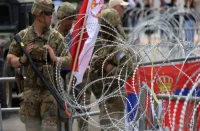
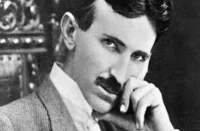
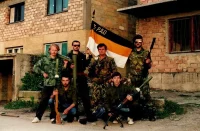



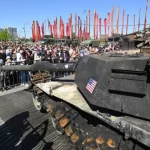

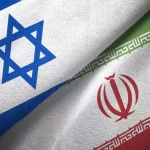





very interesting article. It has a lot of important and interesting information. We were recently asked in college to write an article on this subject. It is a pity that then I did not find your article and I had to use the https://pro-papers.com/history-writing-service service. But this is a really important topic and we need to read more about it. After all, we can all be in the place of Kosovo.
This is a very interesting and informative article, but the topic is quite difficult to understand. Therefore, when preparing a work, I used a service that I found on this resource https://pickthewriter.com/ I believe that reflections and inaccuracies are not permissible here, you need to operate with facts, and if knowledge is not enough, then it is better to ask for help, as in my case.
Great article, thank you!
Thanks all!